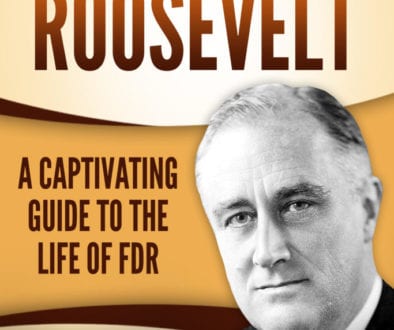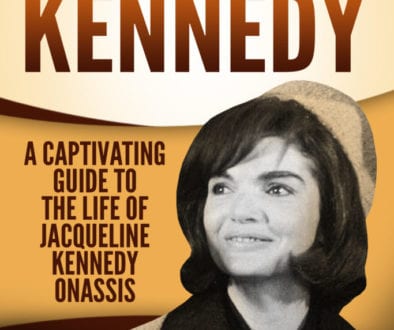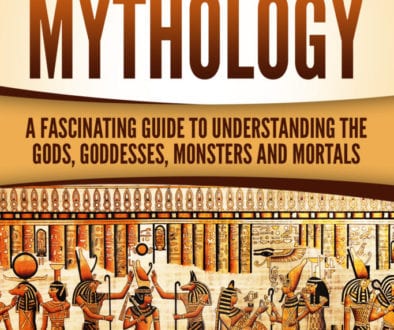The Mirabal Sisters: Patria (1924-1960) Minerva (1926-1960) Maria Teresa (1935-1960)
If you live in a country that is run by a corrupt, violent dictator, you may decide to choose between two options—stay there, or get out and go to live somewhere else. If you decide to stay, you still have two choices. Do you follow the advice that former U. S. Speaker of the House Sam Rayburn used to give to new members of Congress when they first came in—if you want to get along, go along—or do you join the opposition to the dictator and work to take him down? If you opt to join the opposition and work to bring the dictator down, one of two things will then occur, but the choice there will be up to the dictator and his people, not you. Either you will live, or you will die.
The Mirabal sisters, Patria, Minerva, and Maria Teresa, faced those choices. They were born in the Dominican Republic, a country that takes up the eastern two thirds of the Caribbean island of Hispaniola. The Republic of Haiti takes up the rest of the island. After independence from Spain, Haiti actually controlled the entire island until 1844, when the Dominican Republic was established as an independent nation, following a period of armed conflict.
The country went back and forth between periods of peaceful progress and internal strife. The United States actually occupied the country and ran its government for eight years, from 1916 to 1924. Then, in 1930, an army colonel named Rafael Trujillo managed to win a rigged election and became president. He stayed in power until 1961, part of the time as president, rest of the time as the power behind the throne, until some of his own troops assassinated him.
Over those years, Trujillo earned a reputation as the most vicious, corrupt, grandiose dictator in the history of Latin America. He also became one of the wealthiest; his fortune at the time of his death was estimated to be eight hundred million dollars—a lot even today, and a huge fortune at that time. When Trujillo wanted something, he took it. If persuasion, coercion, or bribery failed to work, murder would.
Trujillo was racist as well. Although he himself was a quarter Haitian, he despised his black fellow islanders, and expressed his fear of the “darkening” of his country. It distressed him that a number of Haitians actually lived on the Dominican Republic side of their mutual border, so in 1937, on the pretext that some of them were stealing cattle and crops, he sent troops into the area with machetes to kill them off. The troops stayed for six days, and when they left, somewhere between seventeen thousand and thirty-five thousand Haitians were dead. No one knows the exact number.
Trujillo’s violence was matched by his grandiosity. He had the country’s capital, Santo Domingo, renamed Ciudad Trujillo—Trujillo City. The country’s tallest mountain, which is in fact the tallest in the Caribbean, was La Pelona Grande, the Big Bald Mountain, before Trujillo showed up. He changed the name to Pico Trujillo. He had other villages named after himself or his relatives over the years.
This was the toxic terrain that formed the country the Mirabal sisters grew up in. There were actually four sisters, but one of them, Belgica Adela, who was second oldest, avoided any involvement with groups opposing Trujillo, and managed to stay alive. She had mixed feelings about her sisters’ fate. At one time she said, “I blamed them for putting themselves in danger,” but on another occasion she said she “Wanted to be a part of it all as well. But I didn’t have the heart or the willpower.” She wound up raising her sisters’ six children.
The sisters were raised in a comfortable middle-class home in the central part of the Dominican Republic. Their parents were farmers, raising crops and cattle. In addition to the farmland, they had a machine shop, a coffee mill, a rice mill, and a small meat market. By the standards of the time, they were well off. Neither of the parents had much in the way of formal education; the mother, Chea, had almost none, but they were believers in education for their daughters, which was unusual at that time. Three of the sisters finished college.
Patria, the oldest, was born on the anniversary of the Dominican Republic’s declaration of independence. Her first name came from that. She was considered the artistic one in the family, and loved to paint and draw. She was sent to a Catholic school, as all of her sisters would be, but dropped out of school and got married at seventeen. She and her husband, Pedro, had four children, one of whom died in infancy.
Minerva was considered the brainy one in the family. She learned to read at an early age, and was reciting French poetry by the time she was seven. She graduated from the University of Santo Domingo with a degree in law, but never practiced. She had become an outspoken critic of Trujillo by that time, and was not allowed to obtain a law license. She became more radicalized over the years, and was a supporter of communism and a fan of Fidel Castro in the final years before her death. She married after college and she and her husband, Manuel, had two children.
Maria Teresa also attended the University of Santo Domingo, and graduated with a degree in math. She later married and had a daughter by her husband, Leandro.
Minerva became involved in the opposition to Trujillo early on, and got her husband involved after their marriage. Maria Teresa started becoming involved during a period when she was living with Minerva. Most of their energy went into meeting with others who were opposed to the Trujillo regime, writing pamphlets, and spreading the word about individuals were murdered by Trujillo’s people. It was enough to catch the dictator’s attention, and they were jailed on more than one occasion. Minerva continued to be the more deeply involved of the two, and belonged to an undercover group that hoped to overthrow Trujillo. Her code name in that group was Mariposa, Spanish for butterfly.
In 1959, a group of men who had left or been exiled from the Dominican Republic attempted to mount an invasion. They called themselves the Dominican Liberation Movement, and invaded in three groups. About fifty men flew into the mountain town of Constanza on the June 14. Six days later another hundred and forty-four men split into two launches and hit the beaches at the towns of Maimon and Estero Hondo on the north coast of the island. Most of the invaders were from the Dominican Republic, but the group also included men from other Caribbean countries, and even two from the United States.
Within a week or so, the invading force, if such a tiny group could be called that, was defeated. All of those not killed in the fighting were imprisoned, tortured, and executed. Trujillo’s people also began killing others who were believed to be involved in the abortive uprising. Patria witnessed some of those killings, and at that point joined her sisters in the effort to overthrow the dictator. They helped form a new group that called itself the Fourteenth of June Movement.
The leaders of that movement met again in January, 1960, to put together plans for another uprising. Maria Teresa and her husband Leandro were a part of the group. It turned out that they had been betrayed. Trujillo’s people swarmed into the farmhouse where they were meeting and arrested all of them. Then they started arresting everyone in sight.
The mass arrests created an uproar in the Dominican Republic and everywhere else. Even the Catholic Church protested, long with ambassadors from the United States and other countries. The Organization of American States officially condemned Trujillo.
He backed off. First, he freed all the women who had been placed in prison. That quieted things down some, but not enough, so shortly after that, he freed most of the men, but not the Mirabel sisters’ husbands—Manolo, Pedro, and Leandro. They were seen as ringleaders and kept in prison. All three men were initially held in jail in their home town of Salcedo. Then Minerva’s husband, Manolo, and Patria’s husband, Pedro, were transferred to a prison in Puerto Plata, on the north coast of the island.
On the evening of November 25th, 1960, Minerva, Patria, and Maria Teresa were returning from a visit to the Puerto Plata prison. A crew of Trujillo’s men waylaid them in the mountains, pulled them and their driver from the car, and clubbed them to death. Then they put the bodies back into the car and pushed it off a cliff to try to make it look like an accident.
No one in the country was fooled, and people were outraged, in and out of the Dominican Republic. It was the beginning of the end for Trujillo, although he seems not to have thought so. If anything, he escalated. He decided he had a bone to pick with Venezuelan president Romulo Betancourt, and sent agents to Venezuela to try to assassinate him. The effort failed, Trujillo sank deeper into trouble with other Latin American countries, and in 1961 a group of his own troops assassinated him. After he was dead, one of his officers admitted that the Mirabal sisters had been murdered.
Still, there was not much acknowledgement of the fact for many years. After Trujillo’s death, one of his supporters, Joaquin Balaguer, stepped into his shoes and ran the country until 1996.
The picture is changing now. The country has a democratically elected government, and is doing well socially and economically. Trujillo would be galled to know that Dede Mirabal’s son, Jaime, served as a vice president, and Patria’s son, Nelson, was one of his aides. Minerva’s daughter, Minou, has served as deputy foreign minister.
An obelisk that Trujillo had raised to celebrate the renaming of the capital city, which by the way is called Santo Domingo again, is now covered with murals of the Mirabal sisters.
Salcedo Province, which was their home turf, is now Hermanas Mirabal Province.
The $200 Dominican Republic bill has a large portrait of the sisters on its face, and a picture of their family home on the back.
So maybe all is well that ends well, but the people who loved them would probably rather have the Mirabal sisters home again. If you enjoyed this real-life story about the Mirabal sisters, check out my author page for more of my work!



